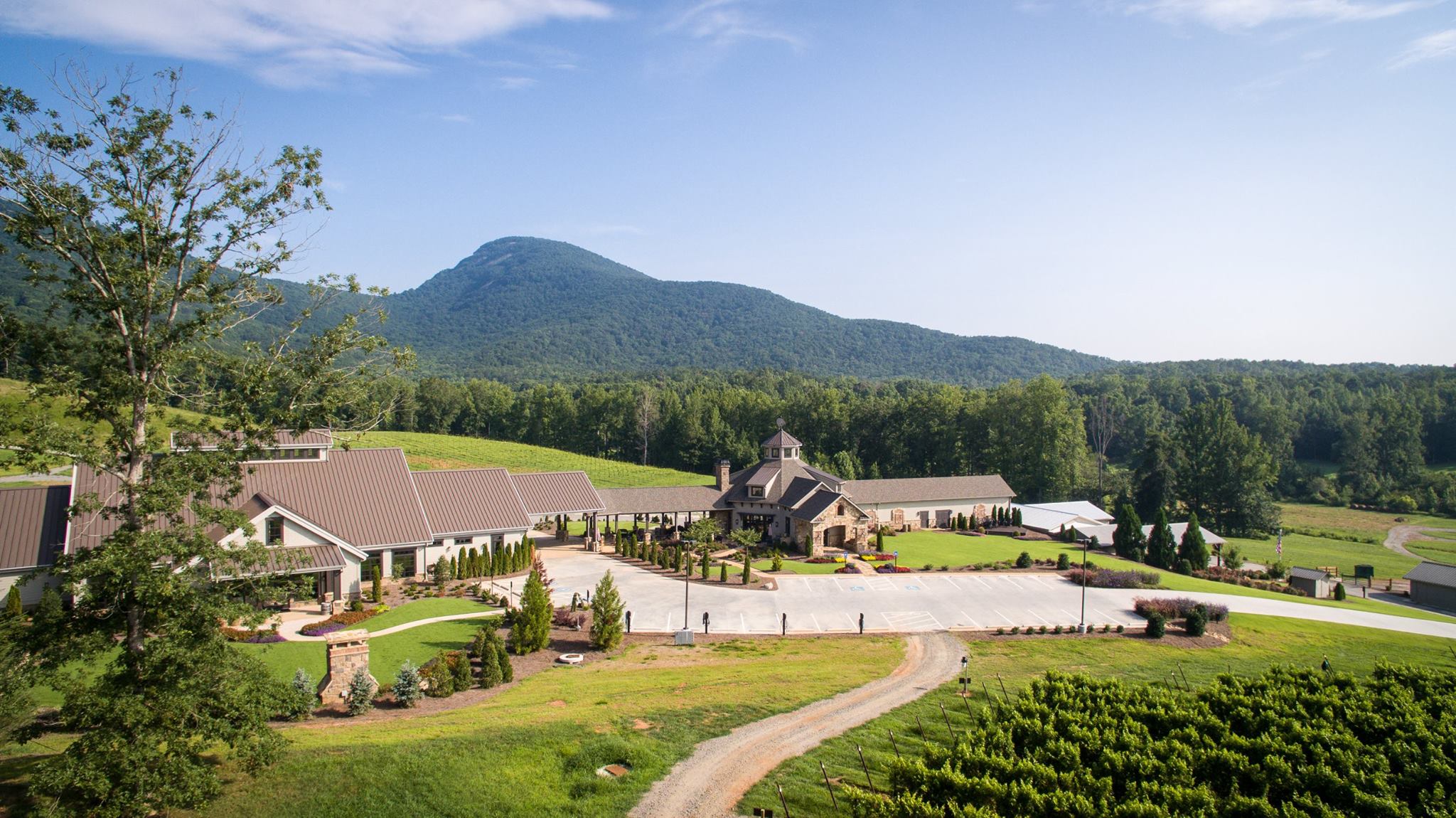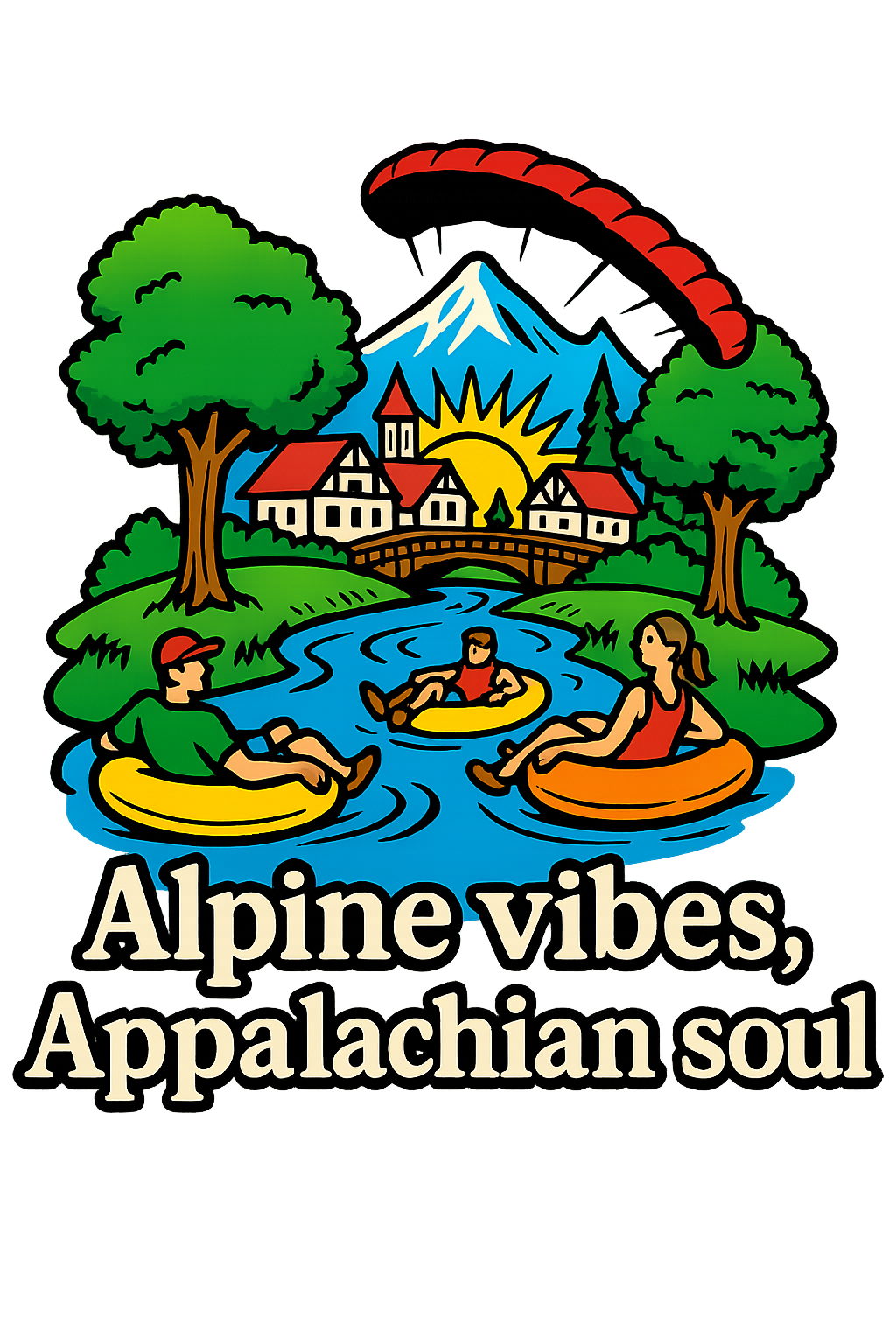Helen, Georgia, with its undeniable charm, often conjures images of a whimsical Bavarian alpine village nestled in the Appalachian foothills. Cobblestone alleys, timber-framed buildings, and the cheerful sounds of oompah music create a delightful escape. Yet, beyond this picturesque facade, a different kind of allure is maturing in the surrounding Northeast Georgia mountains – a vibrant and surprisingly sophisticated wine country. While Helen offers a unique European-themed getaway, the terroir of these ancient hills is giving rise to vineyards and wineries that are quietly cultivating a reputation for quality and character, inviting exploration from discerning palates and adventurous travelers alike.
Think world-class vineyards are only found on the sun-drenched slopes of California or the historic estates of Europe? Think again. Northeast Georgia, with Helen as a charming gateway, is emerging as a noteworthy wine destination, offering a unique expression of Southern viticulture. This journey will guide you through the distinctive wine offerings of this region, delve into its intriguing climatic advantages that draw surprising parallels to more established wine territories, and introduce the must-visit vineyards that are putting Northeast Georgia on the oenophile’s map.
From Gold Rush to Grape Rush: The Story of Northeast Georgia Wine
The story of wine in Northeast Georgia is one of early promise, interruption, and a spirited modern renaissance. Long before the current wave of wineries began dotting the landscape, 19th-century settlers brought their winemaking traditions to the region. During this period, the native Muscadine grape, a hardy variety well-suited to the warm, humid Southeastern climate, was a primary focus. These early efforts established a precedent for viticulture, proving the land’s potential.
However, the burgeoning wine industry faced a significant setback with the advent of Prohibition in the early 20th century. Georgia was, in fact, the first Southern state to enact statewide prohibition in 1907, a decision that led to the destruction or abandonment of many of these nascent vineyards. This period created a long hiatus in the region’s winemaking narrative.
The true rebirth of Northeast Georgia’s wine scene began in the 1990s. A new generation of vintners, recognizing the latent potential of the Appalachian terroir, started purchasing land and cultivating not only the traditional Muscadine but also a diverse array of European Vitis vinifera grapes and resilient French-American hybrids. This marked a pivotal shift towards producing wines with a broader appeal and complexity. This revival narrative, from historical roots through decline to a modern rebirth, imbues the region with a sense of resilience and rediscovered potential, making its current success all the more compelling.
The area around Dahlonega, a prominent town in this wine region, carries a rich history that predates its viticultural fame. It was the site of the first major gold rush in the United States in 1829. The very name “Dahlonega” is derived from the Cherokee word “Ta-lo-Ne-Ga,” meaning “yellow” or “gold”. This historical connection to “gold in the hills” provides a unique local identity, drawing a compelling parallel to the “liquid gold” now being meticulously crafted by its wineries. This distinct heritage offers a richer storytelling tapestry for visitors, setting it apart from other wine destinations.
The growing recognition of the region’s unique grape-growing capabilities culminated in the establishment of the Dahlonega Plateau American Viticultural Area (AVA) on June 29, 2018. This designation, one of only two in Georgia (the other being the Upper Hiwassee Highlands AVA, shared with North Carolina), formally acknowledges the distinctive geographical and climatic features that make the area ideal for viticulture. Affectionately, and perhaps ambitiously, termed the “Napa of the South” , the Dahlonega Plateau AVA signifies a commitment to quality and a growing confidence in the region’s place on the national wine stage. The evolution from primarily Muscadine grapes, often associated with sweeter wines, to the successful cultivation of classic European varietals and sophisticated hybrids, underscores a significant shift in ambition, aiming to captivate a wider spectrum of wine enthusiasts.
The Terroir of Two States: Unpacking Climate in Northeast Georgia and California Wine Country
A fascinating aspect of Northeast Georgia’s burgeoning wine scene is its ability to produce high-quality grapes in a climate that, at first glance, seems quite different from established regions like California’s Napa and Sonoma Valleys. Understanding these climatic nuances reveals how dedicated vintners are harnessing the unique Appalachian environment.
A. California Dreaming: The Mediterranean Ideal
Napa Valley and parts of Sonoma County are renowned for their Mediterranean climate, classified under the Köppen system as Csa (hot-summer Mediterranean) or Csb (warm-summer Mediterranean). This climate is characterized by several key features ideal for viticulture: long, dry, sunny, and warm-to-hot growing seasons, followed by mild, wet winters. The proximity to the Pacific Ocean plays a crucial role, particularly for Napa Valley, where cool marine fog is drawn inland through the Golden Gate and across San Pablo Bay. These fogs and cool evenings temper the daytime heat, allowing grapes to ripen slowly and evenly while preserving crucial acidity—a hallmark of balanced, fine wines. This extended, gentle ripening period is fundamental to developing the complex flavors for which these Californian wines are celebrated.
B. Northeast Georgia’s Climatic Nuances: The Appalachian Advantage
In contrast, Helen and the broader Northeast Georgia region experience a humid subtropical climate (Köppen Cfa), defined by long, hot, and notably humid summers, with rainfall distributed throughout the year, and short, mild to cool winters. While this macro-classification differs significantly from California’s Mediterranean profile, specific geographical factors create favorable meso-climates (climates of a particular vineyard area or group of vineyards) and topo-climates (climates of a specific slope or valley) that are conducive to quality grape growing.
The most significant of these factors is elevation. The Dahlonega Plateau AVA, for instance, sits at an average elevation of around 1,500 feet above sea level. This altitude offers several viticultural benefits. Firstly, higher elevations typically experience more intense sunlight and greater exposure to ultraviolet (UV) radiation. This increased UV exposure can lead to grapes developing thicker skins, which in turn can contribute to greater color concentration, more robust tannins, and enhanced flavor profiles in the finished wines.
Secondly, and perhaps most critically, elevation fosters significant diurnal temperature variation—warm days followed by cool nights. While daytime temperatures allow for optimal sugar development in the grapes, the cooler nighttime temperatures slow down the ripening process. This cooling effect is vital for preserving natural acidity, particularly malic acid, which can be lost in consistently warm temperatures. The preservation of acidity is essential for creating wines that are vibrant, balanced, and capable of aging. Furthermore, these cooler nights can lengthen the overall growing season, allowing grapes more time on the vine to develop complex aromatics and phenolic compounds. This mirrors the effect of California’s coastal fogs, achieving a similar outcome through a different geographical mechanism.
The soil composition and topography of Northeast Georgia also play a crucial role. The region is characterized by well-drained, loamy sand, sandy loam, loam, or clay-loam soils. The prevalence of red clay, often likened to the famed Terra Rossa soils of Italy’s Piedmont region, is particularly noteworthy. These clay-rich soils, combined with the often steep slopes of the Appalachian foothills, promote excellent drainage—a critical feature in a region that receives more rainfall than arid California. Good drainage prevents vine roots from becoming waterlogged, which can lead to disease and diluted flavors, and can even encourage deeper root penetration, stressing the vines in a way that concentrates flavors in the grapes. The Dahlonega Plateau AVA boasts a growing season of 190-200 days, ample time for a diverse range of late-ripening grape varietals to reach full maturity.
C. Bridging the Climates: Parallels and Distinctions
While the overarching climates differ, the effects achieved in the vineyard show parallels. Both regions benefit from abundant sunshine essential for photosynthesis and grape maturation. Northeast Georgia’s higher elevations can even provide more intense sunlight than some valley floor locations elsewhere.
However, the primary challenge for viticulture in Northeast Georgia is its humidity, which creates higher pressure from fungal diseases (like mold and mildew) and certain pests. Pierce’s disease, a bacterial affliction fatal to grapevines, is a significant concern, particularly at lower elevations. Fortunately, planting vineyards at elevations above 1,300 to 1,500 feet generally reduces the risk of Pierce’s disease, although it remains a persistent consideration for growers. These challenges necessitate meticulous site selection, careful canopy management to improve air circulation, and potentially more rigorous vineyard management practices. This forced adaptation, driven by the unique environmental pressures, may well contribute to the development of distinctive wine characteristics and specialized local expertise.
Rainfall patterns also differ. California’s typically dry growing season contrasts with Georgia’s year-round precipitation. While the region’s excellent drainage mitigates many issues, excessive rain, especially close to harvest, can pose a risk by potentially diluting grape flavors. Interestingly, lower winter rainfall in the Dahlonega Plateau AVA has been noted as beneficial, potentially reducing the risk of delayed bud break in the spring.
Ultimately, Northeast Georgia’s success in viticulture demonstrates that quality wine production is not confined to “classic” climate zones. It serves as a compelling example of how unique combinations of elevation, soil, and dedicated viticultural practices can overcome broader climatic challenges, offering inspiration for other emerging wine regions or those adapting to evolving environmental conditions. The moniker “Napa of the South” speaks less to climatic similarity and more to an aspiration for comparable quality and recognition, achieved through its own distinct Appalachian ingenuity.
A Taste of the Mountains: Grape Varietals Thriving in Helen’s Backyard
The diverse terroir of Northeast Georgia supports a fascinating array of grape varietals, reflecting both the ambition to cultivate internationally recognized grapes and a respect for regional heritage and resilience. This blend allows wineries to craft a spectrum of wines that can appeal to a wide range of palates.
Successful cultivation of well-known European Vitis vinifera grapes is a cornerstone of the region’s quality drive. Vineyards proudly grow varietals such as Cabernet Sauvignon, Merlot, Cabernet Franc, Chardonnay, Sauvignon Blanc, Petit Verdot, Malbec, and Viognier. Some wineries delve deeper into the European portfolio with grapes like Petit Manseng (known for aromatic whites), and robust reds like Syrah, Mourvèdre, Tannat, and Touriga Nacional, the latter often associated with Port wines but also capable of producing excellent dry reds. The presence of these classic grapes allows Northeast Georgia to produce wines that can be benchmarked against global standards.
Alongside these European stars, hardy and disease-resistant French-American hybrid grapes play an important role. Varietals like Chambourcin (a red grape producing fruity, spicy wines), Vidal Blanc, and Seyval Blanc (both white grapes often used for crisp, aromatic wines and sometimes ice wine) are practical and successful choices in a climate that can present challenges like humidity and late spring frosts. These hybrids often combine the desirable fruit characteristics of Vitis vinifera with the resilience of native American species.
Speaking of American grapes, Georgia has a long and proud history with the Muscadine (Vitis rotundifolia), a native species in which the state leads national production. While traditionally known for producing sweeter wines, Muscadines are deeply rooted in Southern viticulture, and some wineries are exploring diverse styles with this unique grape. Another notable American grape making its mark is Norton (also known as Cynthiana), sometimes lauded as “the South’s version of Cabernet Sauvignon” for its ability to produce full-bodied, complex red wines.
This diverse grape portfolio—encompassing European classics, adaptable hybrids, and distinctive native varieties—suggests a pragmatic and experimental spirit within Northeast Georgia’s wine community. It’s not a region seeking to define itself by a single varietal, but rather one exploring the full potential of its unique terroir. This approach allows wineries to craft a wide range of wine styles, from elegant, oaked Chardonnays and bold, tannic Cabernet Sauvignons to refreshing Sauvignon Blancs, aromatic Petit Mansengs, and robust Nortons. The region also produces delightful rosé wines, traditional method sparkling wines that rival those from more established areas , and, of course, wines that celebrate the unique character of the Muscadine. This variety ensures that there’s something to entice every visitor, from those seeking the familiar comfort of a well-made Merlot to adventurers eager to taste a truly regional expression. This dual appeal, catering to both traditional wine drinkers and those searching for uniquely American or Southern wine experiences, significantly broadens the market and enriches the regional wine identity. Such diversity could prove to be a considerable strength in a dynamic market, offering flexibility and resilience against climatic or consumer preference shifts.
Your Northeast Georgia Wine Itinerary: Vineyards and Wineries Near Helen
Exploring the wineries around Helen is made enjoyable by their relative proximity and the scenic beauty of the drives between them. Several vineyards are clustered, particularly in the areas of Cleveland and Dahlonega, making it easy to visit multiple locations in a day.
One popular way to navigate the local wine scene is via the Unicoi Wine Trail, a collection of six distinctive vineyards located throughout the beautiful North Georgia mountains. The trail typically includes CeNita Vineyards and Winery, Habersham Vineyards and Winery, Serenity Cellars, Sylvan Valley Lodge and Winery, The Cottage Vineyard and Winery, and Yonah Mountain Vineyards. For those who prefer a guided experience without the worry of driving, services like VIP Southern Tours or the Georgia Wine Bus offer curated tours, often including transportation and pre-arranged tastings. For a broader exploration that extends beyond the immediate Helen area, the Georgia Wine Highway Passport provides access to participating wineries across the state, often with special perks for passport holders.
The concentration of wineries and the development of organized trails and tour services indicate a growing synergy within the region. This collaborative approach to tourism is vital for establishing a strong identity and making it easier for visitors to discover the area’s offerings.
Here is a guide to some of the key vineyards and wineries near Helen, providing practical information to help plan your visit:
| Vineyard Name | Address | Phone Number | Website | Approximate Distance/Time from Helen, GA |
|---|---|---|---|---|
| Habersham Winery | 7025 South Main Street, Helen, GA 30545 | (706) 878-9463 | habershamwinery.com | 0.5 miles / 2-4 min drive |
| Yonah Mountain Vineyards | 1717 Highway 255 S, Cleveland, GA 30528 | (706) 878-5522 | yonahmountainvineyards.com | 9.8 miles / 10-15 min drive |
| CeNita Vineyards & Winery | 591 Dock Dorsey Road, Cleveland, GA 30528 | (706) 865-7478 | cenitavineyards.com | 11.8 miles / 15-20 min drive |
| The Cottage Vineyard & Winery | 5050 Highway 129 North, Cleveland, GA 30528 | (706) 865-0053 | cottagevineyardwinery.com | Approx. 13 miles / 20-25 min drive |
| Serenity Cellars | 265 Laurel Ridge Road, Cleveland, GA 30571 | (706) 348-1277 | serenitycellars.com | 6.9 miles / 11 min drive |
| Kaya Vineyard & Winery | 5400 Town Creek Road, Dahlonega, GA 30533 | (706) 219-3514 | kayavineyards.com | 14.2 miles / 21 min drive |
| Wolf Mountain Vineyards & Winery | 180 Wolf Mountain Trail, Dahlonega, GA 30533 | (706) 867-9862 | wolfmountainvineyards.com | 25.9 miles / 37 min drive |
A brief glimpse into what some of these offer:
- Habersham Winery: As one of the region’s pioneering wineries, Habersham offers a taste of history alongside its broad portfolio of award-winning wines, conveniently located just south of downtown Helen.
- Yonah Mountain Vineyards: Situated at the base of the iconic Yonah Mountain, this 200-acre estate provides an elegant experience with world-class wines, stunning views, and the unique opportunity to tour their wine caves – possibly the only traditionally built ones in Georgia. They cultivate twenty acres with varietals including Sauvignon Blanc, Chardonnay, Petit Manseng, Cabernet Sauvignon, Merlot, Cabernet Franc, Malbec, and Petit Verdot.
- Wolf Mountain Vineyards & Winery: This Dahlonega establishment is celebrated for its European-style wines, particularly its traditional method sparkling varieties, and offers breathtaking views from its hillside location. Its café and popular Sunday brunch often require reservations due to high demand. They cultivate Cabernet Sauvignon, Syrah, Mourvedre, Tannat, Petite Verdot, Malbec, and Touriga Nacional, and also source Chardonnay, Viognier, and Merlot from local vineyards.
The variety of experiences available, from straightforward tastings to elaborate cave tours, live music events , gourmet food pairings , and even relaxed amenities like disc golf or vineyard hammocks at CeNita , indicates that Northeast Georgia wineries are catering to a wide spectrum of visitors. This isn’t just about appealing to dedicated oenophiles; it’s about creating enjoyable and memorable outings for couples, groups of friends, and families, positioning the region as a versatile leisure destination. This broad appeal is a significant asset for a developing wine region aiming to attract contemporary travelers who seek multifaceted experiences.
Beyond the Glass: Experiencing the Northeast Georgia Wine Culture
A visit to the wineries of Northeast Georgia is about more than just the wine in your glass; it’s an immersion into a culture that blends serious craftsmanship with warm Southern hospitality and the breathtaking beauty of the Appalachian landscape. The overall atmosphere is one of welcoming discovery, where the passion of the vintners is palpable.
The stunning natural backdrop is an undeniable draw. Rolling hills carpeted with vineyards, framed by the majestic rise of mountains like the iconic Yonah Mountain, create a picturesque setting for wine tasting. Many wineries are designed to maximize these views, with tasting rooms and patios offering panoramic vistas that enhance the sensory experience.
What often sets this region apart is the genuine Southern hospitality. Many wineries are family-owned and operated, fostering a relaxed, friendly, and unpretentious atmosphere where visitors feel like welcome guests rather than mere customers. This approachability makes exploring the wines and learning about the local terroir an enjoyable and engaging process, even for those new to wine. The region seems to be deliberately cultivating an image that is both quality-conscious, evidenced by numerous awards , and refreshingly down-to-earth.
The experience is further enriched by a vibrant calendar of events and entertainment. Live music is a common weekend feature at many establishments, creating a festive ambiance. Wineries also host festivals, such as the Unicoi Wine Trail Festival or Habersham’s WineFest, and special culinary events like winemaker dinners, providing dynamic reasons to visit throughout the year. Some wineries also emphasize the educational aspect, offering insights into their viticultural practices and winemaking techniques, with Kaya Vineyard & Winery, for example, aiming to provide an educational experience for those passionate about wine , and Yonah Mountain Vineyards offering detailed cave tours.
While serious, award-winning wines are a clear focus, the region doesn’t shy away from fun and accessible options. The availability of wine slushies and appealing sweet blends at some locations caters to a diversity of tastes and underscores the unpretentious, welcoming nature of the local wine culture. This blend of serious winemaking with enjoyable, approachable experiences allows the region to be inclusive, attracting a broad audience from seasoned connoisseurs to casual tourists simply looking for a pleasant day out.
When planning your visit, it’s always wise to check individual winery websites for the most current information on operating hours, tasting fees, and reservation policies, especially if you’re traveling with a group or interested in specific tours or dining experiences. Given the scenic but winding mountain roads, consider appointing a designated driver or utilizing one of the local wine tour services for a safe and relaxing day. Seasonal beauty is another factor; while fall foliage provides a spectacular backdrop, spring often brings wine festivals and the fresh bloom of the vineyards. The strong emphasis on scenic beauty and these ancillary activities positions the wineries as broader leisure destinations, a savvy approach for a developing wine region focused on attracting modern travelers who seek immersive and multi-faceted experiences.
Conclusion: Raise a Glass to Helen’s Surprising Wine Country
Northeast Georgia, with the charming town of Helen at its periphery, offers a wine experience that is both surprising and deeply rewarding. The region successfully marries the rugged beauty of the Appalachian foothills with the dedicated craftsmanship of its vintners, resulting in wines of impressive quality and diversity. From robust Cabernet Sauvignons and elegant Chardonnays to unique expressions of native Muscadine and Norton grapes, there is a discovery awaiting every palate.
The unique terroir, shaped by mountain elevations that provide crucial diurnal temperature shifts and well-drained clay soils that thrive even with ample rainfall, allows these vineyards to produce grapes with concentrated flavors and balanced acidity. This careful dance with nature, combined with the passion and innovation of its winemakers, is what defines this emerging wine destination. Beyond the technical aspects, the welcoming, often family-run, wineries exude a Southern charm that makes every visit a pleasure. The stunning landscapes, lively events, and the genuine hospitality create an experience that lingers long after the last sip.
So, next time you’re dreaming of a wine getaway, consider looking beyond the usual suspects. The mountains around Helen, Georgia, are calling, ready to pour you a glass of something truly special. It’s an adventure for the palate and the soul, proving that exceptional wine country can indeed be found in the most delightfully unexpected places—a Bavarian-esque town with a remarkable vintage secret waiting to be uncorked.




